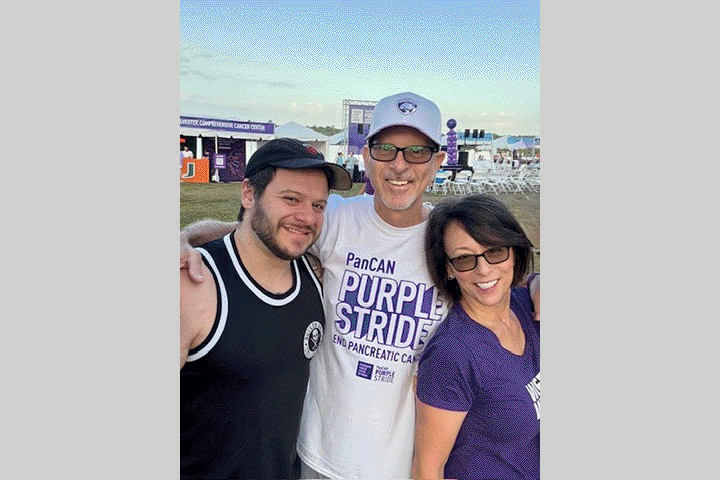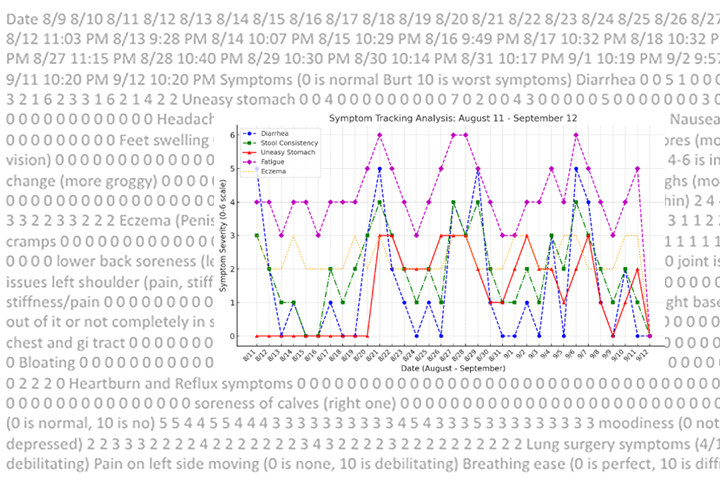What You Should Know about Palliative Care and Pain Management

When you hear the words “palliative care,” you might think of the kind of care people receive towards the end of their lives to ease their transition.
But the reality is that palliative care has a much broader reach. In other words, it isn’t just for patients nearing the end of their days. It is a type of specialized medical care for patients in other stages of their journey with any chronic illness—not just cancer. But for pancreatic cancer patients at any stage of treatment, palliative care can help manage symptoms and side effects.
“Palliative care does not equal hospice care,” explained Milagros Silva, M.D., medical director and assistant professor at NewYork-Presbyterian/Weill Cornell Medical Center (New York) Division of Geriatrics and Palliative Medicine. “Palliative care addresses the patient’s physical and spiritual needs, their emotional health, and, most importantly, their quality of life,” says Silva.
It Takes a Village to Provide Quality Palliative Care
Other key components of palliative care include evaluating the patient’s blood work related to chemotherapy and radiation along with observing the patient. And the medical team can palliate, or provide supportive care, as soon as a condition is diagnosed. The earlier the condition is diagnosed, the better.
In the same way that it takes a village to raise a child, palliative care requires a team effort, too. The people involved in palliating the patient will include a diverse group of professionals, such as doctors, nurses, social workers, and chaplains. Fortunately, you don’t have to halt your regular treatments. You can receive palliative care services right along with standard treatments for your condition.
Even though a team made up mostly of medical professionals works together to provide palliative care, there are also physicians who are specially trained to provide this kind of service. Called palliative care physicians, these doctors work very closely with other healthcare professionals, including medical oncologists and radiation oncologists. And not to worry: Families and patients are part of the equation, too.
“We universally work on treating symptoms—with chemo and radiation, to assess their symptoms,” Silva explains.
Palliative Care Physicians Work to Limit the Challenges of Pancreatic Cancer
While the overall goals of palliative care are generally standard regardless of the condition, doctors tend to make extra efforts to address certain challenges with pancreatic cancer.
“We understand the prognosis [of pancreatic cancer] as a very aggressive cancer, and patients with pancreatic cancer come to us knowing that,” Silva explains. “In addition to addressing physical symptoms and the emotional state, we also support patients in making decisions as they approach the final stages of their lives.”
End-of-life support includes conversations about advanced directives and the patient making plans for the end of their lives with their families. In other words, palliative care physicians care for patients, their families, and their caregivers as a unit.
However, pancreatic cancer comes with its own set of challenges. According to Silva, scientists are still uncovering new information about how to extend life in patients with pancreatic cancer who have a limited prognosis. The good thing is that there are many clinical trials and other research efforts evaluating this information. In the early stages of pancreatic cancer, the disease rarely shows telltale symptoms, and the symptoms that usually appear in later stages of the disease are often not obvious.
Controlling Pain Is Key to Helping Patients Live Their Best Lives
One of the most important aspects of palliative care in people who have pancreatic cancer is pain management. Silva says pain caused by pancreatic cancer can come from different sources—the tumor itself, a nerve, and sometimes even bones.
“Pain management is one of the main reasons we get referrals from oncologists to see what’s the best option for their patients,” Silva explains. “Because we have so many options to treat pain, we don’t want patients to be afraid of not getting their pain under control.” To help put her patients’ fears at ease, Silva and her team spend a lot of time educating their patients about palliative care in pancreatic cancer and the benefits of curbing their pain with medication.
Silva’s medical team encourages patients to take the medications prescribed to control their pain in order to prevent certain aspects of their condition from getting worse. For example, uncontrolled pain can lead to fatigue, decreased appetite, and lower quality of life.
Another important piece of patient education comes from making sure patients understand that taking medications regularly does not automatically mean the medications will stop working. Monitoring patients on a regular basis helps the palliative care doctors figure out whether you are responding to your medications.
Not All Pain Medications Are Created Equal
In pancreatic cancer, pain can come from different sources. The tumor itself can cause pain in an area, and in some cases it might put pressure on a nerve, resulting in nerve pain. The cancer might make your bones or other organs hurt, too.
How doctors treat the pain depends on the type of pain you are experiencing. For example, opioids are commonly used in cancer because they can manage different types of pain effectively compared to other medications. Studies have shown that opioids can effectively treat moderate to severe chronic pain as well as pain caused by cancer.
When receiving an opioid medication for the first time, Silva recommends using lower doses to start. From there, your doctor can slowly increase the dose to tailor it to your individual needs. Opioids come in a variety of dosage forms. Your doctor may choose tablets, liquid, patches, or pills based on your pain level and whether you have used opioids in the past.
One thing that makes opioids stand out is that they can effectively manage breakthrough or acute pain. While some opioids, such as fentanyl patches, help control ongoing pain, others, such as oxycodone, are short-acting. Because the effects of oxycodone and similar opioid medications only last four to six hours, these kinds of opioids make great options for keeping acute pain under control.
Common side effects of opioids include sleepiness and constipation. Some side effects, like sedation and nausea, typically go away. However, constipation is a very common side effect that tends to hang around. If you find yourself constipated from taking opioids, Silva recommends making some changes to your diet. For example, try eating more fiber or drinking prune juice. If neither works, consider taking a stool softener such as senna.
For mild pain, acetaminophen (Tylenol) can help. As you may already know, it is commonly found in some opioid medications as well. Many over-the-counter pain, allergy, and cough and cold medications contain acetaminophen. It’s always a good idea to ask your doctor before taking new products. While side effects are not very common with acetaminophen, the main thing to know is that you should avoid or limit how much you take if you have a liver problem. If this applies to you, ask your doctor for more details.
Some patients may also use nonsteroidal anti-inflammatory drugs (NSAIDs) for minor aches and pains. Examples include ibuprofen and naproxen. NSAIDs tend to have more side effects, but the main thing to watch for is upset stomach, which you can sometimes offset by taking them with food. Also, you should generally avoid NSAIDs if you have heartburn, high blood pressure, kidney failure, or heart failure, as these drugs can make those conditions worse.
Nerve pain has a few more options when it comes to treatment. Oftentimes, doctors will add on additional medications to specifically target nerve pain. These include drugs like gabapentin, amitriptyline, pregabalin (Lyrica), and duloxetine (Cymbalta).
But treating nerve pain does not always mean taking a pill. For instance, if a tumor presses on a nerve, a better option would be to use a nerve block. Nerve blocks are injections that target the root of the pain. Your palliative care physician will refer you to a pain management doctor or anesthesiologist for this treatment.
And, interestingly, radiation also helps manage pain because it shrinks the tumors that often cause it.
Don’t Be Afraid to Manage Your Pancreatic Cancer Pain
When it comes to pancreatic cancer care and pain, the bottom line is this: Palliative care doctors—and medical oncologists—are trained to assess your pain to determine the best treatment plan for your pain and other side effects of treatment. And while pain management is one of the main reasons your oncologist might refer you to a palliative doctor, don’t be afraid to ask for help for your pain.
And if you feel that your current medical team is not meeting your needs, or a palliative care physician is not available in your area, don’t be afraid to ask for a referral or more resources.






